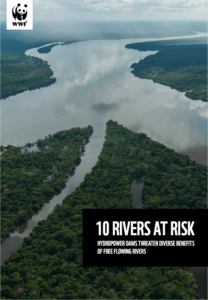Battling drought on trout waters

Phase 1 of the Blackner’s Bend project, a reconstruction of side channel habitat for native Bluehead Sucker and juvenile Bonneville cutthroat trout.
How we’re making key Western streams more hospitable for trout and people in the hotter, drier present
As the West grapples with extreme and unprecedented drought, Trout Unlimited’s restoration pros and partners are pushing forward with on-the-ground work to make waters and fisheries more resilient to changing conditions.
In Idaho, we are decommissioning a hydropower plant to improve streamflows for declining Bonneville cutthroat trout.
In southwest Colorado, we’re making things better on the Upper San Juan.
And in Utah, our climate resiliency projects are rebuilding parts of the Weber River.
Making all this work possible is $3.1 million in grants from the Bureau of Reclamation, the federal agency in charge of managing water resources in the West. The awards to TU and our partners are part of $36.1 million in grants for projects that will safeguard water supplies and improve watershed health. The awards combined Bipartisan Infrastructure Law funds with existing funding through Reclamation’s Environmental Water Resources Program (EWRP) WaterSMART grants.

Installing BDAs at a demonstration project on Fish Creek in 2019.
The WaterSMART program provides funding to irrigation infrastructure projects and other water-delivery or water-use projects that conserve water, increase ecological resilience, and proactively mitigate conflicts over water scarcity.
The EWRP grants are a brand-new class of funding under WaterSMART that support projects collaboratively developed by a diverse range of stakeholders. Authorized by Congress in 2020, this year’s grants are the first time that “nature-based” projects have been eligible for funding, and the first time that multi-benefit projects could receive a higher cost-share—federal dollars can cover up to 75 percent.
These important projects will improve environmental health and provide multiple benefits for agriculture, recreation, rural communities, and the environment. This funding is an investment in the good work that helps the region become more resilient to climate change by supporting irrigation efficiency upgrades, natural infrastructure and restoration, and wildfire response and mitigation.
The TU projects funded reflect our deep relationships in rural communities and commitment to partnerships that translate into win-win solutions for people and the environment.
Upper San Juan Watershed, Pagosa Springs, Colorado
TU, in partnership with the Town of Pagosa Springs and the Upper San Juan Watershed Enhancement Partnership (WEP)—a community-based watershed group—will improve more than two miles of the San Juan River to preserve aquatic habitat in the face of declining flows and warming temperatures.
The San Juan River is home to native fisheries, and river recreation is a significant economic driver in this small, disadvantaged rural community.
A recent assessment commissioned by the Upper San Juan WEP identified alarming changes in stream hydrology driven by prolonged drought. For example, year-over-year reductions in summertime streamflow volumes within the project area are decreasing at an average rate of 700 acre-feet per year. In late summer and fall, fish and other aquatic species are cut off from important habitat, and conditions are expected to worsen significantly, based on state scenario planning models.
The Pagosa Gateway Project involves a series of stream restoration measures, including creation of low-flow channels, riffle and pool habitat, bank stabilization and revegetation, and fish passage improvements to increase the resiliency of the river and its fisheries in the face of a very dry and hot future.
Weber River, Utah
The Weber River Ecological Resiliency Project aims to improve the ecological resiliency of this important basin in northern Utah.
The work will include construction of beaver-dam analogs to improve drought resiliency and riparian health in arid mid-elevation tributaries; reconnecting key habitats on the Ogden River by modernizing irrigation diversions; and reconstructing important side-channel habitats and restoring floodplain function on sections of the Weber River itself.

Dinsdale Irrigation Diversion on the Ogden River
This project is a collaboration with partners including the Utah Department of Agriculture and Food, the Utah Division of Wildlife Resources, Utah Division of Water Quality, the Summit Conservation District, The Dinsdale Irrigation Company, Sageland Collaborative, the Trails Foundation of Northern Utah, and Weber Basin Water Conservancy District.
Paris Creek, Southeastern Idaho
Stream flows will be restored to four miles of the headwaters of Paris Creek in the Bear River watershed with the decommissioning of the Paris Creek Hydropower Plant in Bear Lake County, Idaho.
PacifiCorp, the owner of the plant, and the Bear River Environmental Coordinating Committee (ECC) have been working together to address the decline of Bonneville cutthroat trout in the Idaho portion of the Bear River watershed since 2004. More than 100 conservation projects have been funded by the Bear River ECC with an emphasis on those that benefit trout and other aquatic resources.
The decommissioning of the hydropower plant will restore stream flows that are currently diverted four miles upriver. The current hydropower practices result in the partial or complete diversion of the base flows of Paris Creek for about nine months out of the year.
A new irrigation diversion on Paris Creek and two new stock-water systems will address irrigation and stock-water interests that currently rely on the plant for delivery of their water rights.
By Sara Porterfield



